5 Winter Driving Tips From Driving Lexus Models at a Snowy Track

As auto journalists, our goal is to provide you, the reader, with honest first-hand experience to help make sense of car ownership. Part of that involves our usual reviews and comparisons, but other aspects are more focused. Winter driving is a fact of life for many of us, yet some still question the virtue of things like dedicated winter tires. Others see an “AWD” badge on the trunk of a car and think every all-wheel drive system is the same.
That last point is one of the reasons Lexus Canada invited us to a snowed-in Canadian Tire Motorsport Park. 93 percent of the brand’s sales last year were AWD cars, split between front-biased, rear-biased, gas-powered, and hybrid models. In warmer, drier weather—and test drives that might be days apart—it can be hard for drivers to suss out all the differences and benefits of each approach.
SEE ALSO: 2021 Lexus IS 350 Review: First DriveThat’s why we spent a day driving most of the Lexus lineup through a battery of tests on snow and ice. Here are the five biggest takeaways from the day:
01. Winter tires make a huge difference
Are you tired of hearing every auto journalist talk about the importance of winter tires? Hey, so are we! We wish they were just an accepted part of driving safety, like seatbelts and airbags. At some level though, we understand the apprehension: unless you can test all-seasons and winters back-to-back, it can be hard to see the true advantages.
SEE ALSO: The 8 Best Winter Tires and Why You Absolutely Need ThemSo that’s just what Lexus did. For one of the early morning tests, two journos would line up in UX 250h models—one on all-seasons, one on winters—rip down a short straight, and then drop anchor. Right off the line, the little crossover with the mountain-and-snowflake image on its tires would get the jump, allowing it to put power down cleanly and predictably. More important was the stopping: when both cars would start decelerating at the same point on the track, the all-season car would sail two car lengths further. That’s at speeds of around 37 mph (60 km/h); the distance would grow exponentially at highway speeds.
The extra grip manifests on our way back to the starting line too. Each UX heads through a short slalom here. In the winter-tired trucklet, threading the needle goes as you’d expect. If turning the wheel doesn’t get the nose pointing away from a pylon, a light lift of the throttle brings it back in line. Swapping over to the little blue UX, the car feels about a foot or two longer between the pylons. Speeds need to be slower, and even then, there’s an added delay between the steering wheel and the car’s direction.
Think about any potential sudden direction changes you’d have to make in snowy conditions. Whether you’re dodging a deer on a backroad or just an errant shopping cart in a parking lot, winter tires give your car more grip to handle it. At the end of the day, the only parts of the car interacting with the road are those four contact patches.
02. Not all AWD systems are created equal
Lexus is proud to offer available AWD (or heartier 4WD) on every one of its models, except the LC. As all-paw systems become more prevalent, especially in Canada, it’s important for drivers to know what sets them all apart.
Back to the drag-and-slalom combo. This time, we line up two different models: the ES 250 and IS 350. The former uses a front-biased system and produces a little over 200 hp; the latter is rear-biased, and has 50 percent more power. Both sport Continental winter tires at all four corners. So imagine our surprise when the ES 250 utterly demolishes the IS off the line. It takes until the braking zone for the sport sedan to pull back to parity.
Through the slalom the different setups have their respective quirks. The ES is slightly lighter, but carries more of its weight over the front wheels. That helps it dig into the mix of snow and ice, but it’s more likely to push (understeer) with sudden increases in throttle. The IS needs a fraction more time to slice left and right, but adding power to the mix tightens its line, not straightens it.
03. Driving aids are there to keep you safe
It seems obvious enough, right? Driving assists are meant to keep the car on the road and in one piece. What they aren’t there to do is drive the car for you. To illustrate this, we move to a small circle, mostly snow-covered but with a few ice patches scattered across its surface. For this test we’re back in the UX models, along with a pair of NX SUVs.
The goal here is to hold a steady speed and turning lock around the circle. Once we find equilibrium, we can explore the differences between the pairs: for the UXs it’s the tires; it’s hybrid versus gas for the NX duo. We drive them all in counter-clockwise loops, first with the driving aids on, and then with them switched off.
SEE ALSO: 2020 Lexus NX300 ReviewWith all the electronics active, the SUVs behave pretty similarly when adding throttle: understeer. It varies in intensity—the all-season-equipped UX does it most, unsurprisingly—but the result is the same. The car senses you’re going too fast for the desired path, so it does what it can to lower the speed. Safety first.
Turning things off, the responses are subtly different, even at this low speed. These being family-friendly SUVs, understeer is still the main dish. Aggressive lifts of the throttle do get the gas-powered NX rotating a smidge more than the others though, and a heavy foot has every single one of them understeering more than with the aids on.
Under this controlled environment, the cars are more predictable at their limits, behaving as you’d expect when they run out of grip. But out on a public road, the driving assists keep drivers from having to explore those limits at all. For most drivers, on most roads, in most situations, keeping the nannies active is the wiser choice.
04. Not all AWD systems are created equal, pt 2
As mentioned above, the pair of NX models feature two different drivetrains. The NX 300 uses a turbocharged 2.0-liter, feeding its power to the rear wheels the old-fashioned way: a driveshaft. The NX 300h has no such physical connection. Instead, the hybrid uses a single, 67-horsepower electric motor to power the rear axle when needed.
In most daily-driving scenarios, there’s little between the two setups. They’re pretty evenly matched on the makeshift drag strip; if anything, the hybrid is a bit quicker, likely due to the instant-on torque of the batteries. Both systems are effectively front-wheel drive until the NX senses slip, at which point the rear axle starts feeding in power.
In more serious off-road scenarios, we’d still prefer a mechanical connection, since the NX 300 can draw more power to the rear axle if needed. But let’s be honest: most NX owners aren’t conquering trails in their spare time. For everyday driving, and in these moderately snowy/icy conditions, there’s no real performance penalty in the hybrid, and its fuel savings are impossible to ignore.
05. Old IS300s + studded tires + ice = big fun
We saved the best for last here. Pro racing driver Russ Bond brought a handful of original IS 300s to Mosport, all prepped for ice racing. They’re essentially stock, with bits of the interior stripped, race seats, and comically large handbrakes.
Oh, and studded winter tires.
Needless to say, these old-school IS sedans are a laugh riot. They find grip where the other cars have long since thrown in the towel, but we’re still on a handling course coated in ice, so the natural stance is about 45 degrees of oversteer. The old IS 300 is delightfully predictable here, capable of holding long slides while that 2JZ inline-six sings. There are zero driving aids, with even the ABS turned off.
Even if all the available driving aids were on, the old cars feature just a fraction of what the current IS does. All of the active driver assists part of the Lexus Safety System +, for example, were just pipe dreams in the early 2000s. Advanced cruise control, blind-spot monitoring, a backup camera—none of it was even optional then.
SEE ALSO: 2021 Lexus LC Convertible Review: A Future Classic“We thought it would be important for you to realize how much vehicles have evolved, and how much safety technology has improved in 20 years,” Toyota Canada’s Romaric Lartilleux told us after the event. Bond’s ISs are a hoot on the ice, but they’re tailor-made for it. On public roads and equal tires, they’d struggle to offer their driver the extra information and peace of mind of the newer IS does. We can’t ignore the draw of AWD, either: the first-gen IS never offered it, but most of the Canadian IS lineup is all-paw in 2021.
Become an AutoGuide insider. Get the latest from the automotive world first by subscribing to our newsletter here.

Kyle began his automotive obsession before he even started school, courtesy of a remote control Porsche and various LEGO sets. He later studied advertising and graphic design at Humber College, which led him to writing about cars (both real and digital). He is now a proud member of the Automobile Journalists Association of Canada (AJAC), where he was the Journalist of the Year runner-up for 2021.
More by Kyle Patrick



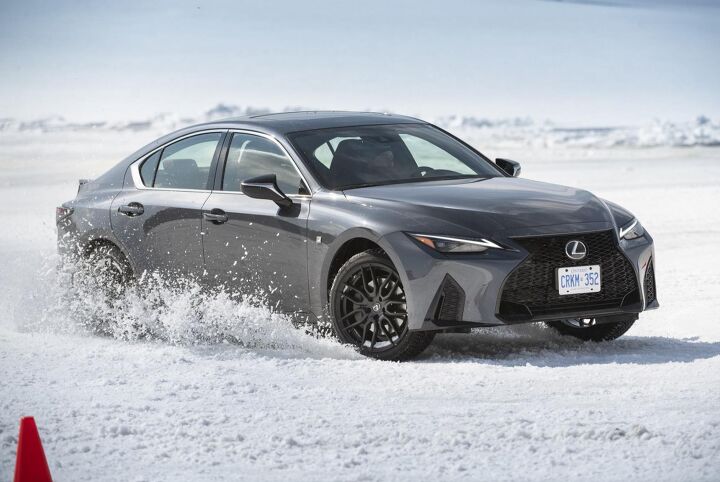
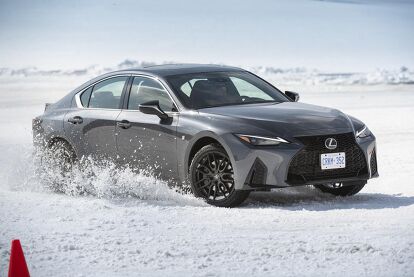





























































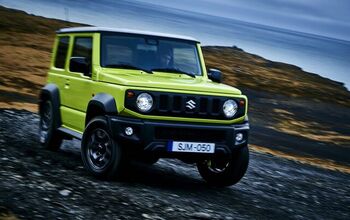

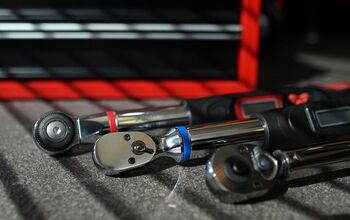


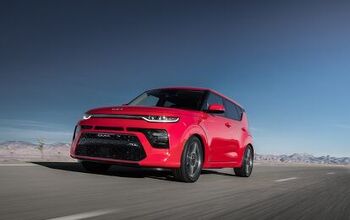
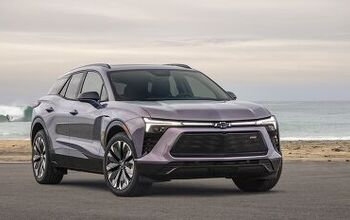


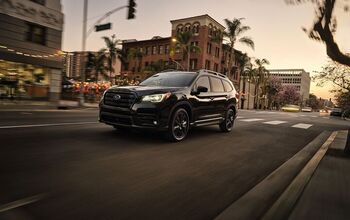
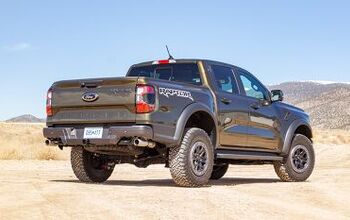
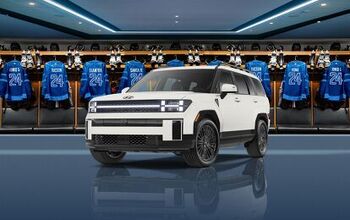

Comments
Join the conversation